#andrew solt
Text
"LITTLE WOMEN" (1949) Review
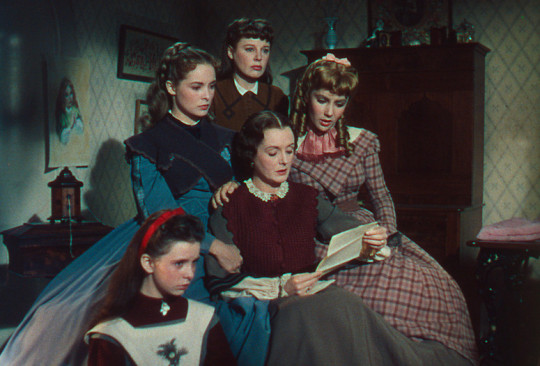
"LITTLE WOMEN" (1949) Review
Louisa May Alcott's 1868 novel is a bit of a conundrum for me. I have never been a fan of the novel. I have read it once, but it failed to maintain my interest. Worse, I have never had the urge to read it again. The problem is that it is that sentimental family dramas - at least in print - has never been appealing to me. And this is why I find it perplexing that I have never had any problems watching any of the film or television adaptations of her novel.
One of those adaptations proved to be Metro-Goldwyn-Mayer's 1949 adaptation, which was produced and directed by Mervyn LeRoy. It is hard to believe that the same man who had directed such hard-biting films like "LITTLE CAESAR", "I AM A FUGITIVE FROM A CHAIN GANG" and "THEY WON'T FORGET", was the artistic force behind this sentimental comedy-drama. Or perhaps MGM studio boss, Louis B. Meyer, was the real force. The studio boss preferred sentimental dramas, comedies and musicals. Due to this preference, he was always in constant conflict with the new production chief, Dore Schary, who preferred more realistic and hard-biting movies. Then you had David O. Selznick, who wanted to remake his 1933 adaptation of Alcott's novel. One can assume (or not) that in the end, Meyer had his way.
"LITTLE WOMEN", as many know, told the experiences of the four March sisters of Concord, Massachusetts during and after the U.S. Civil War. The second daughter, Josephine (Jo) March, is the main character and the story focuses on her relationships with her three other sisters, the elders in her family - namely her mother Mrs. March ("Marmee") and Aunt March, and the family's next-door neighbor, Mr. Laurence. For Jo, the story becomes a "coming-of-age" story, due to her relationships with Mr. Laurence's good-looking grandson, Theodore ("Laurie") and a German immigrant she meets in New York City after the war, the equally good-looking and much older Professor Bhaer. Jo and her sisters deal with the anxiety of their father fighting in the Civil War, genteel poverty, scarlet fever, and the scary prospect of oldest sister Meg falling in love with Laurie's tutor.
Despite my disinterest in Alcott's novel, I have always liked the screen adaptations I have seen so far - including this film. Due to the casting of Margaret O'Brien as the mild-mannered Beth, her character became the youngest sister, instead of Amy. Screenwriters Sally Benson, Victor Heerman, Sarah Y. Mason and Andrew Solt made other changes and they left out some of Alcott's memorable plot points from the novel's narrative. But these changes, however regretful a few of them were (namely Jo and Amy's conflict over the former's manuscript) did not have any real impact on Alcott's original story. Ironically, both Victor Heerman and Sarah Y. Mason wrote the screenplay for Selznick's 1933 film. This should not be surprising, considering that this adaptation bears a strong similarity to the earlier version. I thought Mervyn LeRoy's direction injected a good deal of energy into a tale that could have easily bored me senseless. In fact, MGM probably should have thank its lucky stars that LeRoy had served as producer and director.
As much as I admired LeRoy's direction of this film, I must admit there was a point in the story - especially in the third act - in which the pacing threatened to drag a bit. My only other problem with "LITTLE WOMEN" is that I never really got the impression that this film was set during the 1860s, despite its emphasis on costumes and the fact that the March patriarch was fighting the Civil War. Some might say that since "LITTLE WOMEN" was set in the North - New England, as a matter of fact - it is only natural that the movie struggled with its 1860s setting. But I have seen other Civil War era films set in the North - including the 1994 version of "LITTLE WOMEN" - that managed to project a strong emphasis of that period. And the production values for this adaptation of Alcott's novel seemed more like a generic 19th century period drama, instead of a movie set during a particular decade. It is ironic that I would make such a complaint, considering that the set decoration team led by Cedric Gibbons won Academy Awards for Best Art Direction.
I certainly had no problems with the cast selected for this movie. Jo March seemed a far cry from the roles for which June Allyson was known - you know, the usual "sweet, girl-next-door" type. I will admit that at the age of 31 or 32, Allyson was probably too young for the role of Jo March. But she did such a phenomenon job in recapturing Jo's extroverted nature and insecurities that I found the issue of her age irrelevant. Peter Lawford, who was her co-star in the 1947 musical, "GOOD NEWS", gave a very charming, yet complex performance as Jo's next door neighbor and friend, Theodore "Laurie" Laurence. Beneath the sweet charm, Lawford did an excellent job in revealing Laurie's initial loneliness and infatuation of Jo. Margaret O'Brien gave one of her best on-screen performance as the March family's sickly sibling, Beth. Although the literary Beth was the third of four sisters, she is portrayed as the youngest, due to O'Brien's casting. And I feel that Le Roy and MGM made a wise choice, for O'Brien not only gave one of her best performances, I believe that she gave the best performance in the movie, overall.
Janet Leigh, who was a decade younger than Allyson, portrayed the oldest March sister, Meg. Yet, her performance made it easy for me to regard her character as older and more emotionally mature than Allyson's Jo. I thought she gave a well done, yet delicate performance as the one sister who seemed to bear the strongest resemblance to the sisters' mother. Elizabeth Taylor was very entertaining as the extroverted, yet shallow Amy. Actually, I have to commend Taylor for maintaining a balancing act between Amy's shallow personality and ability to be kind. The movie also featured solid performances from supporting cast members like Mary Astor (who portrayed the warm, yet steely Mrs. March), the very charming Rossano Brazzi, Richard Stapley, Lucile Watson, Leon Ames, Harry Davenport, and the always dependable C. Aubrey Smith, who died not long after the film's production.
Overall, "LITTLE WOMEN" is a charming, yet colorful adaptation of Louisa May Alcott's novel. I thought Mervyn LeRoy did an excellent job in infusing energy into a movie that could have easily sink to sheer boredom for me. And he was enabled by a first-rate cast led by June Allyson and Peter Lawford. Overall, "LITTLE WOMEN" managed to rise above my usual apathy toward Alcott's novel.
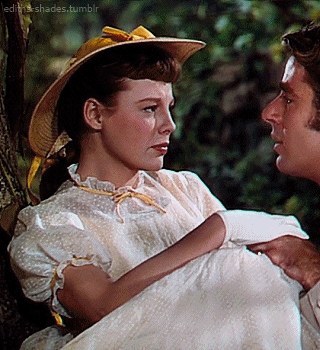
#little women#louisa may alcott#little women 1949#june allyson#janet leigh#elizabeth taylor#margaret o'brien#mary astor#peter lawford#leon ames#rossano brazzi#lucile watson#c. aubrey smith#elizabeth patterson#mervyn leroy#harry davenport#richard stapley#connie gilchrist#ellen corby#andrew solt#sarah y. mason#victor heerman#old hollywood#period drama#period dramas#costume drama
4 notes
·
View notes
Photo
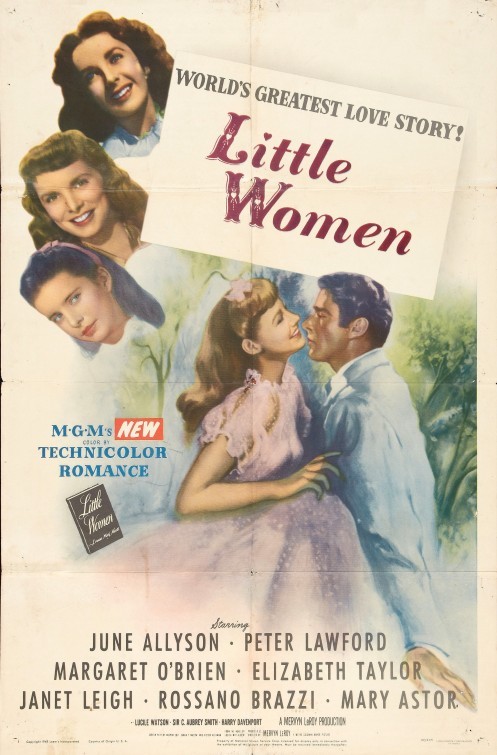
#73: Little Women (1949, dir. by Mervyn LeRoy)
#little women#movies of 2022#movie post#mervyn leroy#you go girl pass that bechdel test#louisa may alcott#andrew solt#sarah y. mason#victor heerman#sally benson#female screenwriters#women screenwriters#lwathon
0 notes
Text
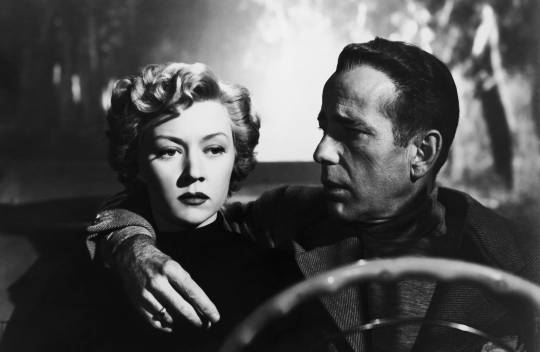
Gloria Grahame and Humphrey Bogart in In a Lonely Place (Nicholas Ray, 1950)
Cast: Humphrey Bogart, Gloria Grahame, Frank Lovejoy, Carl Benton Reid, Art Smith, Jeff Donnell, Martha Stewart, Robert Warwick, Morris Ankrum, William Ching, Steven Geray, Hadda Brooks. Screenplay: Andrew Solt, Edmund H. North, based on a story by Dorothy B. Hughes. Cinematography: Burnett Guffey. Art direction: Robert Peterson. Film editing: Viola Lawrence. Music: George Antheil.
The "lonely place" is Hollywood, where Dixon Steele (Humphrey Bogart) is a screenwriter with a barely held-in-check violent streak. This celebrated movie contains one of Bogart's best performances, though it looks and feels like the low-budget production it was. Bogart's own company, Santana, produced it for release through Columbia, instead of Bogart's employer, Warner Bros., which may explain why, apart from Bogart and Gloria Grahame, the supporting cast is so unfamiliar: The best-known face among them is Frank Lovejoy, who plays Bogart's old army buddy, now a police detective. In a Lonely Place seems to be set in a different Hollywood from the one seen in the year's other great noir melodrama, Billy Wilder's Sunset Blvd. There are no movie star cameos and glitzy settings in the Bogart film. What this one has going for it, however, is a haunting, off-beat quality, along with some surprising heat generated between Bogart and Grahame, who plays Laurel Gray, a would-be movie actress with an intriguing, only partly glimpsed past that hints at a sapphic subtext. She has, for example, a rather bullying masseuse (Ruth Gillette), who seems to be a figure out of this past. In fact, the whole film is made up of enigmatic figures, including Steele's closest friends, his agent, Mel Lippman (Art Smith), and an aging alcoholic actor, Charlie Waterman (Robert Warwick). Both of them stick with Steele despite his tendency to fly off the handle: He insults and at one point even slugs the agent, while at another he defends the actor with his fists against an insult. Though the central plot has to do with Steele's being suspected of murdering a hat-check girl (Martha Stewart) he brought to his apartment to tell him the plot of a novel he's supposed to adapt, the film is less a murder mystery than a study of a damaged man and his inability to overcome whatever made him that way. And despite the usual tendency of Hollywood films to end with a resolution by tying up loose ends, In a Lonely Place leaves its characters as tensely enigmatic as they were at the start -- perhaps even more so.
5 notes
·
View notes
Photo
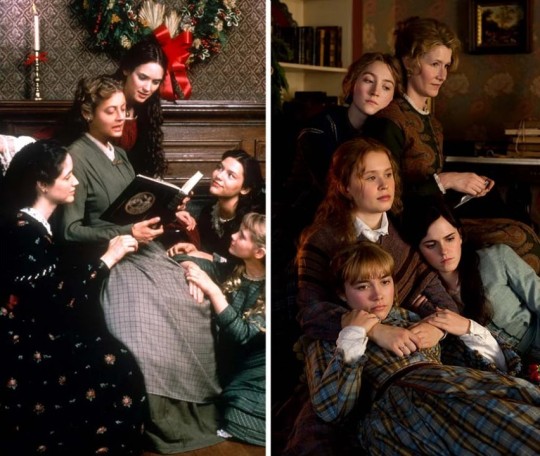
[image description]
Two images next to each other. On the left the characters Jo, Meg, Beth and Amy being read to by their mother Marmie in a Christmas setting. On the right, Jo, Beth, Meg and Amy gathered around their mother Marmie all looking into different directions.
One question listeners: are you a Jo, Amy, Beth, or Meg? This episode, we’re discussing characters in the 1994 and 2019 versions of Little Women, and diving deep into subtextual readings and fan interpretations.
We’ll discuss disability, autistic, and queer readings, and try to answer our question: is Little Women a ‘story for every generation’, and why is it so popular?
To listen, just head to the link in our bio, or find us wherever you find podcasts 🎧
[headphones emoji]
https://spotifyanchor-web.app.link/e/Dcu52sHYLzb
🍂🍁📚🎄🍃🌳❄️☃️📜✍️🪶
[falling autumn leaves emoji; leaf emoji; stack of books emoji; Christmas tree emoji; falling green leaves emoji; tree emoji; snowflake emoji; snowman emoji; scroll emoji; handwriting emoji; feather emoji]
📝 Shownotes: 📝
📼 Preread text (Rowan Ellis, https://youtu.be/SMFll3aIbmo)
Primary Sources:
📚 “Little Women” (1868, 1869) by Louisa May Alcott
🎞️ “Little Women” (1933) (dir. George Cukor, 📜 Sarah Y. Mason and Victor Heerman)
🎞️ “Little Women” (1949) (dir. Mervyn LeRoy, 📜 Andrew Solt, Sarah Y. Mason, Victor Heerman)
🎞️ “Little Women” (1994) (dir. Gillian Armstrong, 📜 Robin Swicord)
🎞️ “Little Women” (2019) (dir. + 📜 Greta Gerwig) (https://variety.com/wp-content/uploads/2019/12/little-women-by-greta-gerwig.pdf)
📺 “Little Women” (2017) (dir. Vanessa Caswill, 📜 Heidi Thomas) (Masterpiece: PBS)
Secondary Sources:
📰 “Life Magazine: Little Women: A Story for Every Generation” (Meredith Corp., 2020)
📜 ‘Everything depend[s] on the fashion of narration’: Women Writing Women Writers in Short Stories of the Fin-de-Siècle (Bryony Randall)
📜 “The New ‘Little Women’ Makes Space For Jo’s Queerness” (Shannon Keating) (https://www.buzzfeednews.com/article/shannonkeating/little-women-greta-gerwig-saoirse-ronan-jo-march-queer)
📜 “The New Little Women Basically Proves Jo March is Queer” (Michelle Hyun Kim) (https://www.them.us/story/little-women-greta-gerwig-jo-march-queer)
📜 Amatonormativity (https://medium.com/the-science-scholar/opinion-amatonormativity-the-damaging-pedestal-of-romantic-love-d70cc0585b0f)
📜 “The Real Reason Hairspray Was Banned On The Little Women Set” (Avery Stone) (https://www.refinery29.com/en-us/2019/12/9114384/little-women-movie-hair-makeup-interview)
📼 “Little Women: Laurie & Jo” (https://youtu.be/osdVRusNGgg)
🎞️ “Divergent” (2014) (dir. Neil Burger, 📜 Evan Daugherty, Vanessa Taylor)
📼 “Greta Gerwig, Representation, and the Universal Girl” (https://youtu.be/0p-cBSqIDbQ)
📼 “Why Neurodivergent People Relate to Jo March” (https://youtu.be/x-j5XK1wpyo)
📱Social Media Handles📱:
IG: https://www.instagram.com/liliannapod/
Twitter: https://twitter.com/liliannapod
Tumblr: https://www.tumblr.com/blog/liliannasprereadmediathek
🎹 Intro Music 🎹:
"Wall" by Jahzaar, licenced under Attribution-ShareAlike 4.0 International (CC BY-SA 4.0)
🎹 Outro Music 🎹:
“Waterbeat” by DJ Lengua, licenced under Attribution 3.0 Unported (CC BY 3.0)
🎹 Transition Music 🎹:
“Pencil” by zakkolar - Pixabay
“Fireplace Fire Crackling - Loop” by SoundsForYou - Pixabay
“Sleigh Bells fast” by jcdecha - Pixabay
“Tambourine christmas sound effect 25” by beetpro - Pixabay
“Footsteps in the snow, шаги в парке,” by SSPsurvival - Pixabay
#LittleWomen #LouisaMayAlcott #JoMarch #AmyMarch #BethMarch #MegMarch #Laurie #GretaGerwig #SaoirseRonan #EmmaWatson #FlorencePugh #ElizaScanlen #LauraDern #TimothéeChalamet #BobOdenkirk #MerylStreep #GillianArmstrong #SusanSarandon #WinonaRyder #KirstenDunst #ClaireDanes #ChristianBale #AdaptationTheory #MoviePodcast #podcast #queer #FeministPodcast #QueerPodcast #LiliAnnasPrereadMediathek #LiliAnnaPod
#trans #ace #DisabledRepresentation #DisabledRep #disability #disabled
7 notes
·
View notes
Text
When I first saw In A Lonely Place there was a scene that made me say “this was written by a woman”:
Well, I was half right. While the screenplay was written by Hollywood men Andrew P. Solt and Edmund H. North, the novel of the same name that it was based on was written by Dorothy B Hughes, a little-known noir novelist from the 1940s. The changes from book to film, though, are fascinating, and indicative of the different sensibilities we see from these writers. I will say there are major spoilers ahead and recommend that you at least see the film, if not read the book. They’re both short, and I think truly fascinating pieces of media that I highly recommend.
Out of context that scene may seem like a dismissal of Stella’s fears, a sort of refuting of what she’s worried about. However, in the scene before that Dix is describing, in detail, how he thinks the murderer might have killed another young woman, and uses the couple, Brub (yes, really) and Sylvia, as his body doubles. Brub (Sylvia’s husband) begins to strangle her as Dix describes the murderer doing so. Dix and Brub seem to revel in the pantomime, and Sylvia has to scream to snap them out of it. Their display makes Sylvia’s accusations here feel very real, and makes Brub’s dismissal feel even more sinister.
Now, to get the massive spoiler out of the way, the man that Sylvia there is worried about is Dixon Steele (his real name in both the book and movie... I know), and in the film, it turns out that in spite of throwing his ex-girlfriend down a flight of stairs and nearly strangling his current one, Dix is not the murderer they’re looking for. Violent? Dangerous? Well, only if you don’t treat him right. In the book though, it’s not even a twist. The first page of the book is Dix stalking a woman, and the only reason he doesn’t succeed in killing her is that she makes it to her house before he can catch up with her.
However these characters Brub and Sylvia don’t know that in either version, and neither does Laurel, his girlfriend. The film then, is a mystery: did Dix do it? While the book is more of a Patricia Highsmith-esque thriller: When will they catch him? And indeed a similar scene takes place in the book, wherein Sylvia suspects Dix, but Brub, who is an old army buddy of his, doesn’t want to believe her. Throughout both texts Laurel becomes increasingly afraid of Dix, in the film because she suspects him of murder, but in the book it’s because he’s becoming increasingly violent and possessive.
To me, it begs the question, is Sylvia right to be suspicious, as she is here, and as she is in the book? In the book the answer is unquestionably yes, Dix is a murderer, one who they catch by setting him up to kill Sylvia, when he believes she is Laurel. In the film though, it’s more complicated. On the one hand, men happily dismiss his violent tendencies, saying that it’s just how he is, and even that it makes him exciting (as we see Brub do above). But we know he seriously harmed his ex, and that at the end of the film he seriously harms Laurel. Meanwhile the Dix/Laurel romance is framed as tragic in the film, with ‘suspicion’ being blamed for its downfall. As if, if Laurel had never suspected that Dix might have killed someone, then they could have been happy. On the one hand, that claim seems ridiculous with all we see of Dix, but on the other hand, the film frames it as true.
In the final scene, Dix is strangling Laurel until they’re interrupted by a phone call. At Dix’s urging, Laurel answers, and says this:
youtube
The important line of course being ‘yesterday this would have meant so much to us’. As long as Dix hadn’t actually strangled Laurel things would be fine! Even though that’s not the first time he’s shown violent tendencies, even though he was extremely possessive, it totally would have been okay if he just hadn’t strangled her. I emphasize her because we also know Dix physically abused his ex, and although it made Laurel nervous, it wasn’t enough for her to dump him.
And Sylvia in the lynch pin in all of this, the book, the film, the violence, for me. Because although she’s a relatively small character, she brings up questions of authority and knowledge. In both versions, she feels that something is wrong about Dix (and, to be fair, she’s not the only one, the Laurel of the book also feels something off about him, and the police commissioner in the film is convinced that Dix was the murderer too) but in the film she’s only half right. In the film, she is right that he’s violent, but in the way Dix and Laurel’s romance is depicted, as this tragic romance ruined by suspicion, there is a pretty clear through line that Laurel could have fixed him, if only she believed in his innocence. Therefore if only Sylvia, if only the police, if only everyone believed that this man, known for violent outbursts, known for abusing his girlfriends wouldn’t go as far as to kill someone, then they could have been happy together. In spite of the film's dark tone, their scenes together are truly idyllic when they're in their honeymoon phase.
And in the book, of course, its the exact opposite. If only the men around Dix believed that he could be a murderer, lives might have been saved. Fraught gender dynamics permeate most noir films, but it is interesting to see the differences that adaptational differences can make.
#films#books#classic film#noir film#women writers#movies#reviews#my writing#thoughts#noir film is wild but also the best#like I love this movie I just like being critical#Youtube
2 notes
·
View notes
Text
Nigredo's First Issue is Now Available

Now available: Nigredo, an international anthology of art and writing from 21 contributors in response to current cultural and political conditions.
From the base dissolution or putrefaction of matter—the Nigredo of language, image and gesture—the first stage of a process of transformation occurs. It begins at ground zero where antagonisms and sympathies root and intensify—it ends with a work offered to others.
Nigredo also refers to the historical situation we find ourselves in, where conflict is the norm—whether experienced physically, psychologically, culturally, socially, economically, politically, racially, and by gender—and peace a momentary relief.
Contributors:
WILL ALEXANDER
KIRSTIN CHAPPELL
ANDREI CODRESCU
W. A. DAVISON
KATHY FOX
JOËL GAYRAUD
CHARLES BAUDELAIRE
JON GRAHAM
ALLAN GRAUBARD
JOAN HALL
BEATRIZ HAUSNER
S. HIGGINS
STUART INMAN
PATRICK LEPETIT
RIK LINA
PAUL MCRANDLE
ANDREW MENDEZ
VALERY OISTEANU
RUTH OISTEANU
GREGG SIMPSON
JOHN SOLT
JANE SPARKES
PETER LAMBORN WILSON
7 notes
·
View notes
Text
Little Women (1949)
You will see several places online that Little Women 1949 shares a script with Little Women 1933. This is true in part but not whole. It shares two of its writers (Sarah Y. Mason and Victor Heerman), and it’s clear that this film takes 1933′s script as it’s starting point as it shares multiple lines and scenes. However, 1949 has a third writer, Andrew Solt, and it’s clear that he’s made some edits to the script. Unfortunately, the edits that he made tend to highlight the parts of the script that were already weak in 1933, sometimes even making them worse.
The pacing of the movie is awful. I noted down times at several points. At 23 minutes in, we still haven’t made it to Christmas day (in book terms, this is a single chapter.) At 46 minutes in, we still haven’t made it past New Year’s Eve (meaning we have only covered through chapter 3 of the novel.) After this leisurely beginning, the movie finally seems to realize it needs to speed up a little, skipping multiple events to get us to the telegram (from chapter 15) at an hour and 5 minutes. We get to the end of part 1 15 minutes later at an hour and 20 minutes. This not only means we have 40 minutes left to try and get through part 2, it also means the movie speeds through part 1 plot points on which it would be better to linger such as the telegram and trip to Washington and Beth’s illness. It’s hard to feel much of anything when we barely get to experience events.
Just as damningly, 1949 doesn’t have a stand-out performance to distract you from the script’s flaws like 1933 does. Margaret O’Brien is fairly good as Beth, for as little as you get to see her, but as this takes 1933′s approach of having a Jo-centric script, Jo’s actress needs to carry the movie. While all the sisters in Little Women are generally played by actresses older than their book counterparts due to the two part structure of the book, June Allyson is, as far as I can tell, the oldest actress to ever play Jo at 32. This is only highlighted by her much more appropriately aged co-stars, such as the 22-year-old Janet Leigh as Meg, the 17-year-old Elizabeth Taylor as Amy, and the 12-year-old Margaret O’Brien as Beth. Even Mary Astor as Marmee is only 11 years older than the actress playing her second daughter.
Worse than being too old for the part is that June Allyson never really does anything to make the role her own. She seems to be trying to copy Katherine Hepburn’s performance and only really manages a pale imitation. It’s a shame because it would have been great to see what unique spin Allyson could have brought to the part if she hadn’t either decided to or been directed to imp Hepburn.
#Little Women#Little Women 1949#Louisa May Alcott#Alcott Adaptation Assessment#Alcott Adaptation August#There is dialogue that mentions the Marches having a cat. We never get to see it. :(
3 notes
·
View notes
Text
London's £150 theatre ticket problem
Recently, Andrew Scott spoke up about the £150 theatre tickets that are on sale across West End shows. I mean, apart from glaring inaccuracies in the article ("Tickets for Plaza Suite, which stars husband and wife Matthew Broderick and Sarah Jessica Parker, cost from £125 to £395." is just untrue - unless when I paid £35 for my ticket, I somehow spent £125...), statements like this are simply misleading. And in my opinion, actually do more harm to the public's perception of theatre than good.
This is not defending £150 theatre tickets - the pricing of which is a whole other discussion. It's that £150 is practically never the average price of a ticket, practically never the price that most tickets are for one performance of 600+ seats and according to The Stage's report, just slightly above the average MOST expensive ticket.
The average cheapest theatre cost in the West End is around the £25 mark, according to SOLT. I'm not one to decide whether £25 is affordable, accessible or whatever. But £25 for a West End show, one that is deemed by the public at large to be the best quality in the world on par with Broadway, seems reasonable to me.
Celebrities and other major names saying that tickets are £150 is harmful for many reasons. One being that reading hot statements like that, from the average non-theatregoing joe public member's point of view, may reinforce the idea that theatre is not for them. That theatre is too expensive.
But a gentle reminder that the West End is not the only theatre you can attend is rarely mentioned. Across the UK, there are 100s of theatres putting on full programmes of productions throughout the year. And most of their ticket prices don't even graze three figures.
It's the public's perception that the West End is high-quality (not always), the West End is the best theatre that can be produced (not always) and that anything that isn't in London, and specifically the 39 West End theatres, must be made by amateurs and wannabe theatremakers.
Under 30s, for example, at Chichester Festival Theatre can enjoy £5 tickets across all their productions throughout the year. Theatre Royal Bath's tickets range from £9 to £60. Bristol Old Vic's tickets rarely exceed £60. Here, I've listed you three producing (and receiving) houses who have shows that regularly, with high regard, transfer to the West End. That place where, once it hits those theatres, it is suddenly of high quality. It's suddenly recognised.
And even then, it's worth reminding ourselves, despite The Guardian's article, that £150 for a show in London is not normal. And that's not even mentioning places in London like the Royal Court who have cheap tickets, and develop high quality shows. Or the Lyric Hammersmith. Or the Bush Theatre. Or Southwark Playhouse. There's so many options to experience theatre at a fraction of the price, and receive high quality entertainment.
Even for shows with big celebs £150 is not the only option. There are times when it's often the only price band left, sure. But that's the unfortunate repercussions of shows with big celebs - they attract crowds who purchase the cheaper tickets faster.
Maybe we should start questioning actors and producers who select to do high profile shows in London, where rates and stakes are higher rather than grassroots theatres across the country. We know that X famous actor in Y show in Z London theatre will have extortionate tickets. That's less likely to happen in a producing house across the country.
Why don't we start questioning the intention of the production? Ultimately theatre is a business, and that's why. The rest of London relies on theatregoers - much like the towns & cities other theatres are located in - but remove Matt Smith, David Tennant, Tom Holland and everyone else in major West End shows and there's a knock-on effect elsewhere. But no one does ever seem to ask "why does this have to be produced in London?".
Anyway, there are cheaper tickets available in the West End. And that's just an unfortunate fact some clickbait-led folks will just have to accept.
Sure, saying "actually there are cheaper tickets available" (even in the West End) doesn't make the news, doesn't get clicks and certainly doesn't drum up engagement.
I also really can't be bothered to get into "it's only the shit seats that are cheap" because you and I both know you're only kidding yourselves at this point. It's been proven untrue so many times. I also don't want to nod to rush ticket and on the day lotteries because as someone based regionally, I know this just isn't an acceptable way to purchase tickets for most of the country.
But I think it's probably worth noting, for the future of theatregoers, the future of our 16-25 year olds that Andrew Scott mentions, and the future of theatre at large, that £150 is by no means the average ticket price, the expected ticket price or the only option.
0 notes
Text
Master of my domain combo video ssbm

#Master of my domain combo video ssbm mod
#Master of my domain combo video ssbm iso
#Master of my domain combo video ssbm series
The program was online through Drexel University (Go Dragons) and it took me about four years to complete. At 53, I just completed a Masters program in library and information sciences, with a concentration in archives. 2004 chevy silverado map sensor severe brain fog adhd reddit homes for sale on fish lake Tech kensington antique village when i say i love you more house for sale with pool san antonio wall chiming clock.
#Master of my domain combo video ssbm iso
Not to disappoint you, but this article isn’t about THAT. This is 'Sonore iso2dsd not convert SACD ISO to DSD & DSF' by vuanui on Vimeo, the home for high quality videos and the people who love them. This offers a quick and easy way to specialize and customize characters of a given class to your liking. For any Seinfeld fans out there, the title may give you a chuckle. A class archetype is an alternate version of that class with a modified set of abilities, strengths, and weaknesses. What are Class Archetypes?Įach base class draws upon a central ideal, a basic concept. Unlike base classes, characters must meet specific requirements (see each prestige class for details) before they can take their first level of a prestige class. Prestige classes allow characters to become truly exceptional, specializing in and gaining powers beyond the ken of their peers. If you want to optimize your character and party, we suggest you check out our Builds section. (Cues: Death Battle - Wiz and Boomstick) Solt: The ability to master and mimic others fighting style is no easy feat. First Leffen finally gets his visa issues revolved and. Please read OilVersion history for correct value for now. From Melee impressions to old school combo videos to THE REEEEEADS, we go on a journey filled.
#Master of my domain combo video ssbm mod
NOTE that due to mod extract is not carried yet for 3.13 and 3.14 changes, the modifier may show legacy value. This a list of anointments that can be applied to rings. This a list of anointments that can be applied to amulets or Blight unique items.
#Master of my domain combo video ssbm series
Additionally, you may want to opt for unique schools of magic based on Role-Play or simple preference. Taskmaster VS Edge Master is the 33rd episode of DEATH BATTLE, featuring Taskmaster from Marvel Comics and Edge Master from the Soul Calibur series in a battle between masters of mimicry combat. This is a list of all possible anointments. Certain Races may have better affinity to specific Classes and Archetypes, for example. At 1st level, you forge a powerful melee weapon using a combination of your knowledge of engineering, metallurgy, and martial prowess. Thanks for watching and thank you for all the support I've gotten these past few months.DWTD - Kickstart My Heart. 2021 Winners 1st Andrew Rosener CEO, Media Options 2nd Keith Richter Cofounder, Lumis Group 3rd Ryan McKegney Cofounder & CEO, DomainAgents 4th Jeff Gabriel Saw. When you choose this specialization at 1st level, you gain proficiency with martial weapons and shields. See 10 of 's Best Master of Domains Each year, recognizes the top names in the domains industry for the deals they’ve closed. Picking the right class for your play style is an important part of Character Creation. You are a master of combat and engineering, able to forge a powerful weapon to crush your foes underneath your feet.

0 notes
Link
Check out this listing I just added to my Poshmark closet: SHEET MUSIC 1946 The Jolson Story Anniversary Song.
0 notes
Audio
Audio clip: Filmmaker Andrew Solt recalls screening the 1988 Imagine: John Lennon film for Paul at a London recording studio.
SOLT: When that [toppermost of the poppermost] was being prepared in John’s line when he was setting it up and he said, “Well, I used to cheer them up by saying…” Paul said it in sync with him, “To the toppermost of the poppermost!”
[…]
SOLT: He [Paul] reacted very well. He sang along with a lot of the tunes. He–he was really into it and at the end of the piece, you know, you could tell he was really…he missed John.
#John Lennon#Paul McCartney#The Beatles#1980s#Andrew Solt#(can’t begin to imagine what was going through Paul’s head as he watched and heard John on screen)#(note of nostalgia)#Imagine: John Lennon#lennon/mccartney
106 notes
·
View notes
Photo

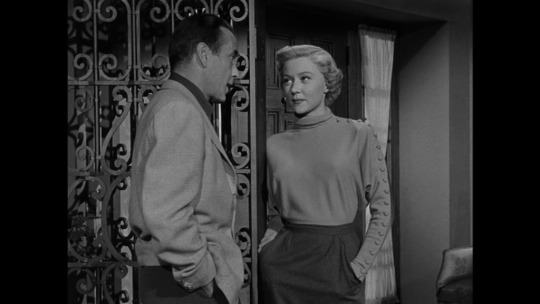

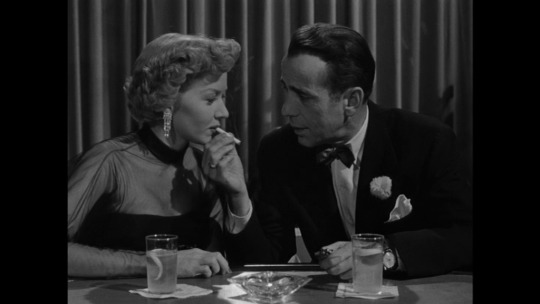
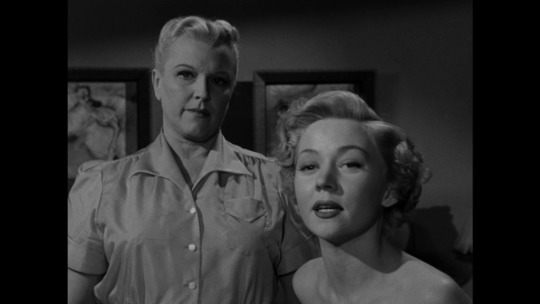

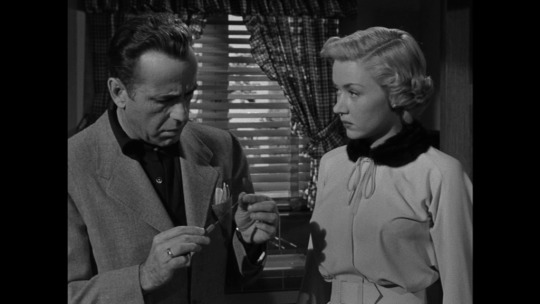


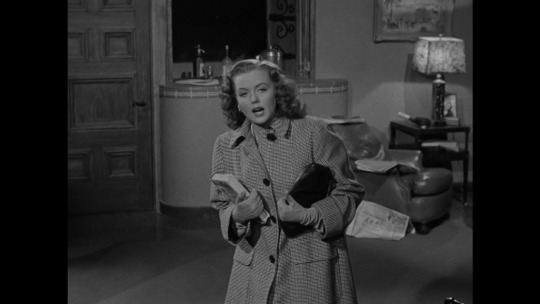
In a Lonely Place 1950
#in a lonely place#1950#nicholas ray#humphrey bogart#gloria grahame#andrew solt#hollywood en psychanalyse#6/10
25 notes
·
View notes
Photo

Imagine: John Lennon (1988) Andrew Solt.
1 note
·
View note
Text



Little Women (1994/2019) Part 3 is now LIVE
We’ve reached the final part of our trilogy on Little Women, and the time has come to say good-bye to the March sisters and co… But not before we’ve thoroughly discussed these adaptations one last time!
So join us once more as we examine how the two films treat their male love-interests, how Gerwig reimagines the concept of the ‘family’, and as we question who, or what, we should be directing our criticisms towards when we critique these movies.
Can Little Women be a ‘story for every generation’? Or is this the wrong question?
To hear our views, hit the link in our bio, or find us on all good podcasting apps 🎧 [headphones emoji]
🍂🍁📚🎄🍃🌳❄️☃️📜✍️🪶
[falling autumn leaves emoji; leaf emoji; stack of books emoji; Christmas tree emoji; falling green leaves emoji; tree emoji; snowflake emoji; snowman emoji; scroll emoji; handwriting emoji; feather emoji]
📝 Shownotes: 📝
📼 Preread text (Rowan Ellis, https://youtu.be/SMFll3aIbmo)
Primary Sources:
📚 “Little Women” (1868, 1869) by Louisa May Alcott
🎞️ “Little Women” (1933) (dir. George Cukor, 📜 Sarah Y. Mason and Victor Heerman)
🎞️ “Little Women” (1949) (dir. Mervyn LeRoy, 📜 Andrew Solt, Sarah Y. Mason, Victor Heerman)
🎞️ “Little Women” (1994) (dir. Gillian Armstrong, 📜 Robin Swicord)
🎞️ “Little Women” (2019) (dir. + 📜 Greta Gerwig) (https://variety.com/wp-content/uploads/2019/12/little-women-by-greta-gerwig.pdf)
📺 “Little Women” (2017) (dir. Vanessa Caswill, 📜 Heidi Thomas) (Masterpiece: PBS)
Secondary Sources:
📰 “Life Magazine: Little Women: A Story for Every Generation” (Meredith Corp., 2020)
📜 Amatonormativity (https://medium.com/the-science-scholar/opinion-amatonormativity-the-damaging-pedestal-of-romantic-love-d70cc0585b0f)
📜 Grady, Constance, “The power of Greta Gerwig’s Little Women is that it doesn’t pretend its marriages are romantic” (https://www.vox.com/culture/2019/12/27/21037870/little-women-greta-gerwig-ending-jo-laurie-amy-bhaer)
📜Nicolaou, Elena, “Why Greta Gerwig's Little Women Movie Radically Changed the Book's Ending” (https://www.oprahdaily.com/entertainment/a30186941/little-women-ending/)
📜 Mendelson, Scott, “Box Office: Greta Gerwig’s ‘Little Women’ Tops $100M” (https://www.forbes.com/sites/scottmendelson/2020/02/06/box-office-little-women-tops-100-million-greta-gerwig-saoirse-ronan-florence-pugh-oscars/)
📼 “Little Women: Laurie & Jo” (https://youtu.be/osdVRusNGgg)
🎞️ “Divergent” (2014) (dir. Neil Burger, 📜 Evan Daugherty, Vanessa Taylor)
📼 “Greta Gerwig, Representation, and the Universal Girl” (https://youtu.be/0p-cBSqIDbQ)
📼 “Why Neurodivergent People Relate to Jo March” (https://youtu.be/x-j5XK1wpyo)
📼 “How I Wrote Little Women — Greta Gerwig's Writing Advice” (https://youtu.be/vG906HuUz38)
📱Social Media Handles📱:
IG: @liliannapod
Twitter: @liliannapod
Tumblr: @liliannasprereadmediathek
🎹 Intro Music 🎹:
"Wall" by Jahzaar, licenced under Attribution-ShareAlike 4.0 International (CC BY-SA 4.0)
🎹 Outro Music 🎹:
“Waterbeat” by DJ Lengua, licenced under Attribution 3.0 Unported (CC BY 3.0)
🎹 Transition Music 🎹:
“Warm Piano Logo” by Music_For_Videos – Pixabay
#LittleWomen #LouisaMayAlcott #JoMarch #AmyMarch #BethMarch #MegMarch #Laurie #GretaGerwig #Barbie #BarbieMovie #SaoirseRonan #EmmaWatson #FlorencePugh #ElizaScanlen #LauraDern #TimothéeChalamet #BobOdenkirk #GillianArmstrong #SusanSarandon #WinonaRyder #KirstenDunst #ClaireDanes #ChristianBale #MoviePodcast #podcast #queer #FeministPodcast #QueerPodcast #LiliAnnasPrereadMediathek #LiliAnnaPod
#trans #ace #DisabledRepresentation #DisabledRep #disability #disabled
#MerylStreep #AdaptationTheory
6 notes
·
View notes
Photo

In a Lonely Place (1950)
#in a lonely place#film#filmmaking#cinema#cinematography#nicholas ray#andrew solt#humphrey bogart#gloria grahame
30 notes
·
View notes
